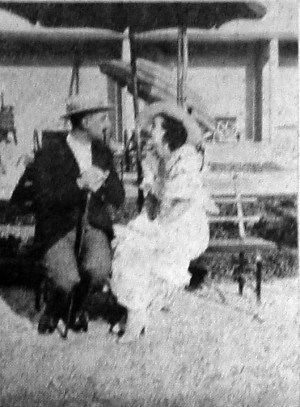
"avant-garde documentary"
"Fiera di tipi, realizzata da Leone Viola con la collaborazione tecnica di Fernando de Marzi, si svolge tutta sullo sfondo della Fiera di Padova ed ha una trama impostata su ben sette personaggi di primo piano. Ma i realizzatori hanno saputo imprimere a ciascuno di essi una fisonomia inconfondibile creando anche due gustose macchiette: ma i caratteri non sono caricati: la vicenda scorre dall'uno all'altro dei personaggi, si imbroglia, si ricompone: la Fiera di Padova è di sfondo all-azione che senza fiera non esisterebbe; tanto tutti gli episodi sono strettamente connessi a quella manifestazione. La fotografia, dovuta a Dodi Calcagno, è in qualche punto un po' oscura, altrove assume un brillante risalto. Le doti narrative dei realizzatori si manifestano in questo film della durata di un'ora, ed è intanto — a parte gli altri pregi del film—non poco. Qualche lieve ritocco al montaggio si renderebbe necessario, allo scopo di raggiungere una completa omogeneità narrrativa. Noi parlando nel nostro passato numero prevedevamo il successo che questo film ha ottenuto, che sarà di incoraggiamento ai giovani volenterosi."
"Fiera di tipi, directed by Leone Viola with the technical collaboration of Fernando de Marzi, takes place against the backdrop of the Padua Fair and has a plot based on seven leading characters. But the creators were able to give each of them an unmistakable physiognomy, also creating two tasty little characters: but the characters are not privileged: the story flows from one character to the other, is cheated, is recomposed: the Fair of Padova is the background to the action that would not exist without the fair; all the episodes are closely related to that event. The photography, by Dodi Calcagno, is at some points a little obscure, elsewhere it takes on a brilliant prominence. The narrative talents of the filmmakers are manifested in this one-hour film, and is meanwhile - apart from the other merits of the film - not insignificant. A few slight adjustments to the editing would be necessary in order to achieve complete narrative homogeneity. We, speaking of it in our past issue, predicted the success this film has achieved, which will be an encouragement to willing young people."
From "Gazzetta di Venezia" republished in "Cine-club Padova," Eco del cinema, n. 130, 1934
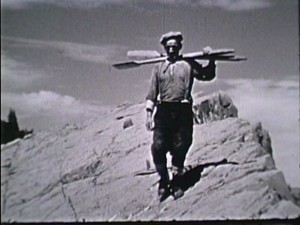
"In Fishers of Grande Anse, Leslie P. Thatcher, ACL, has compiled a vivid and crystal clear cinematic document of cod fishing in a little village in northern New Brunswick. This picture is a restrained work of art that depicts the austere beauty of toil. Repairing boats and nets, catching and cleaning the cod, salting and storing the fish for market and the fishermen leaving for home are the raw material from which this black and white production draws its rugged and satisfying beauty. Close shots and closeups (never affected or forced) comprise the simple devices whereby the irrelevant and possibly distracting material is excluded and whereby the magnificent compositions are achieved. The technical quality of the picture is superb, but probably Mr. Thatcher's greatest accomplishment is in his choice of camera viewpoint." Movie Makers, Dec. 1935, 550.
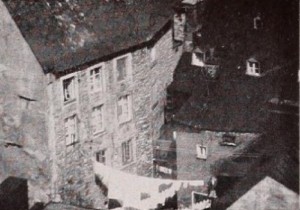
"A schoolboy in need of material for a geography theme launches Five Days From Home, as Dad gets out the movie projector and shows Son the cine harvest of his summer holiday. Among the points covered in a whirlwind auto trip from New York to Canada are Quebec City, Montmorency Falls, a Canadian pulpwood mill and Ausable Chasm, in New York State. Mannie Lovitch's handling of these subjects is always competent, occasionally excellent. His inquiring camera found many scenes of quaint charm in the old St. Lawrence city, and his full scale visual treatment of the pulp mill is sustained in interest by a superb bit of scoring with modern music by Virgil Thompson. Of especial note is Mr. Lovitch's mobile cross-cutting of the three to four themes which make up his coverage of the usually difficult Ausable Chasm." Movie Makers, Dec. 1948, 493.
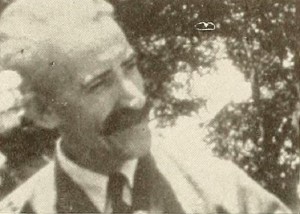
"Flowering Byways, presented with well chosen musical accompaniment, is a story of the creation and growth of a home garden, cleverly interwoven with the thread of human interest. In it, Ernest Kremer has made a thoroughly enjoyable and interesting record of his father in law's gardening ability. "Pop's garden" has its beginnings in the chilly days of early spring, when the bare ground gives little promise of the profusion of bloom that is to spring up under Pop's skillful hands. We follow with keen interest the growth of the garden through subsequent months. Mr. Kremer's skill in presentation being demonstrated by the constant variety of material and by the interpolation of well chosen touches of human interest. Finally, the apotheosis of Pop's garden creation is realized when he takes first prize at the local garden club show. The flower closeups here are always excellent, but they are not made an end in themselves." Movie Makers, Dec. 1941, 565.
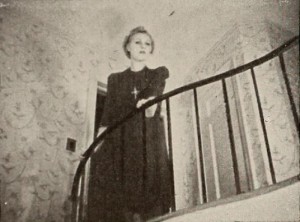
"Boy meets girl and color meets a cine club in Footloose, the latest production of the Rockville Cinema Club; the result is an able and entertaining farce comedy. In moving from black and white to Kodachrome, the members of this veteran group have taken the hurdle in their stride. If anything, the chromatic medium may be said to have added sparkle and brilliance to their plot complications and to the angles, editing and cutting with which they interpret them. Definitely keyed to the Hollywood '"screwball" school of roughhouse comedy, Footloose opens with a dynamic and delightful introduction of the players and carries on to involve a boy and a girl, an artist, his model and assorted comedy and character actors, in random but romantic complications. The pace is fast, the color pleasing and the cutting crisp and well integrated with the action." Movie Makers, Dec. 1940, 602.
"Children playing with a box of toys in the garden at Westworth, Cockermouth. Adults emerge from the house to walk and run around in the garden." (NWFA Online Database)
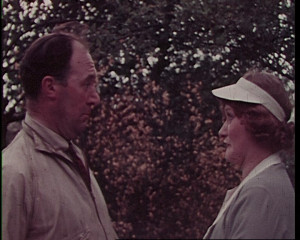
A short comedy about a couple who are unable to decide on a sporting activity to do together.
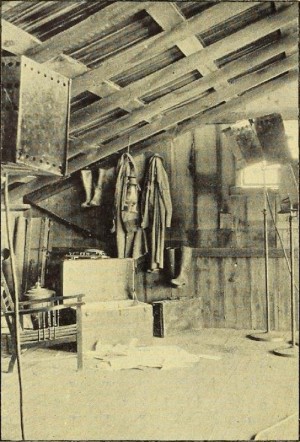
"Galleon Gold, 1600 ft., 16 mm., produced by the San Jose Players under the leadership of John C. Waterhouse, strikes a more sober note. This entertaining drama of the youth of a venerable Spanish family, who discover the treasure trove of the Conquistadores in time to save the family hacienda from the encroachment of the lime quarries, contains much good photography, a smooth continuity, experienced acting and first rate direction." Movie Makers, Sept. 1930, 569.
"Galleon Gold, 1600 ft., 16mm., produced by the San Jose Players, deserves special mention for its smooth flowing continuity alone. Although the difficulty of securing a lucid continuity is greatly increased in a longer dramatic picture, the producers of this film have achieved perfect clarity. This film was made during a summer vacation at a mountain ranch and it seemed at first that the lack of electric current for lighting would be an insuperable obstacle since the script called for many interior scenes. The problem was finally solved by a portable motor generator driven by a gas engine which, with proper lighting equipment, made ample illumination possible." Movie Makers, Dec. 1930, 788.
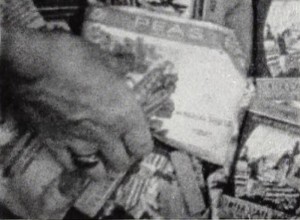
"Albert D. Furnans has taken a group of charming people in a natural pursuit, truck gardening, and has developed a genuinely amusing "running gag"; the result is a delightful family film. Through an excellent sense of timing, he has sustained the "gag" with proper finesse until its final disclosure. The refreshing use of angles and the meaningful employment of lighting, together with good editing, bring balance and clarity. The entire picture shows the result of good planning and directing, and the filming keeps well abreast of these." Movie Makers, Dec. 1945, 496.
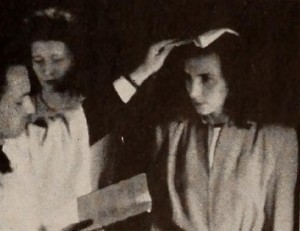
"The pitfalls of sentimentality and bombast have both been avoided in Gateway to Faith, a simple, dignified teaching film of the Roman Catholic baptismal rites, produced by the Reverend Edward Hayes and the Reverend Paul Hayes. With a clarity reminiscent of Thomistic syllogisms, the two priests show precisely what happens during a baptism and explain, with equal precision, the symbolic meaning of each section of the ritual. The film was made for instructional purposes; it fulfills these purposes in a highly intelligent manner. Gateway to Faith was produced at Sacred Heart Church, in Newark, N. J., and received the official imprimatur from Archbishop Thomas J. Walsh. The priest in the film is played with restraint and dignity by the Reverend John Wightman." Movie Makers, Dec. 1947, 537.
Total Pages: 29